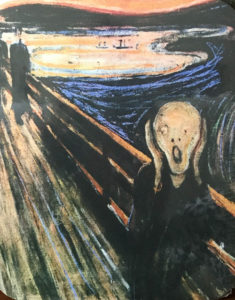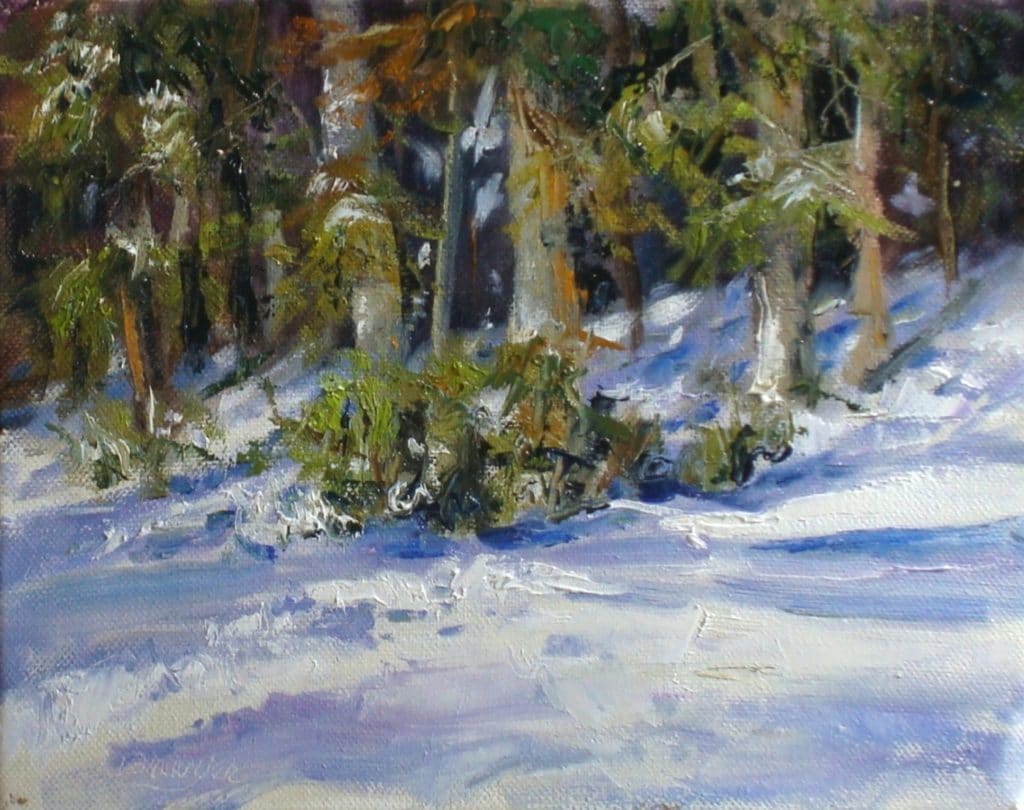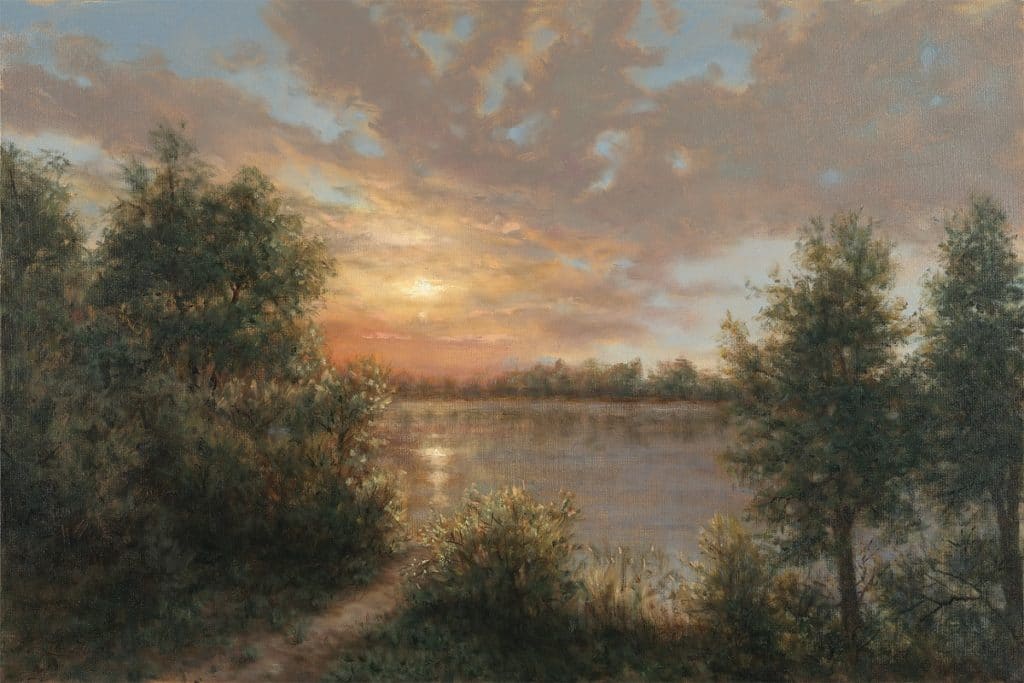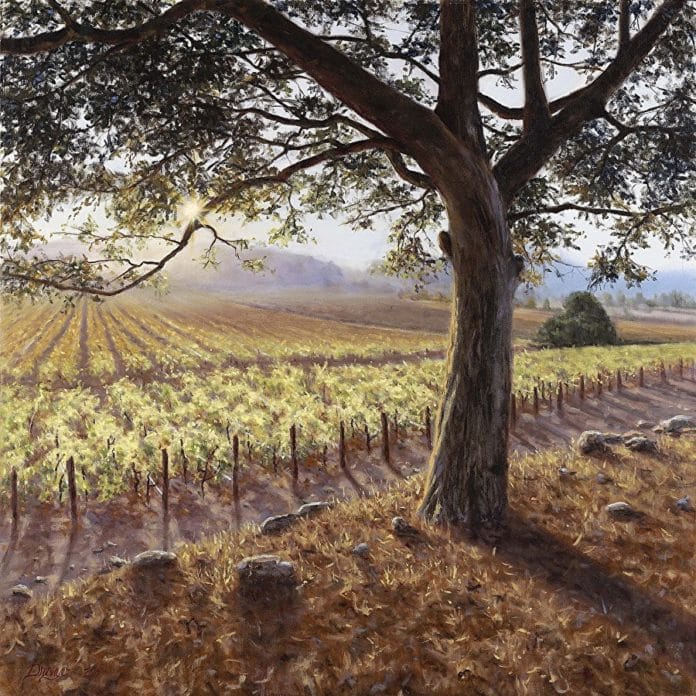By Christine Graefe Drewyer
As artists, we are always looking for that magic formula which will help our art get that extra recognition, draw attention (no pun intended ), and yes have our masterworks actually SELL. In my experience as a painter, the secret to finding the nirvana of these qualities is to remember your adjectives.
When I was a co-owner of a gallery some 15 years ago, a very interesting phenomenon would occur. The first person who would walk into the gallery that day would be particularly drawn to a piece that they were obviously smitten with. Sometimes that would result in a sale and sometimes not. The extraordinary thing we would witness after that could only be explained as some kind quantum physics! The next several people who came after them would walk up to that very same piece as if pulled by a magnet. We would refer to this phenomenon by simply saying to each other, “Whose energy is up today?”
I believe that what was happening was that each piece does actually possess an energy of its own which is imbued by the artist as they created it. To paint, I know that I must be fully present to create it; there is no thinking about the grocery list while you paint or you’ll most certainly be starting again.
When we stand in front of a scene, if we are not personally moved by that subject, it most definitely will NOT translate. Have you ever created a piece because you knew that your gallery was near a harbor and it was going to be a sure bet (or so you thought) that painting boats in a harbor would be a guaranteed sale? I know I have, but oh my, how wrong! I have quite a few studies that ended up being Frisbees because they were not inspiring subjects to me to begin with.
When you remember what actually inspired YOU about any particular scene, it is that very essence which will make another relate to it. I like to play the adjective game when scouting out a new subject to paint. If you are having troubles believing me, I present Exhibit A, “The Scream” by Edvard Munch. Now you just can’t gaze upon that piece and not feel the angst, frustration, fear, and probable pain. With its bridge in the background, the very desire to cast yourself off of that bridge to end the misery probably goes through your mind too.

To help demonstrate my adjective technique, I present a painting called “Snow Shadows,” a plein air oil painting I created right after a ferocious snow storm had dumped 36 inches on us overnight. The day was dazzling and the shadows were a celebration of blues and violets. The very air was crystalline and breathtaking. OK, it was breathtaking because it was paralyzingly cold out. The scene was actually so pristine that I didn’t want to leave my footprints or (perhaps body prints, considering how deep this stuff was) or do anything to disturb the quality of the freshly fallen snow. I stood on my porch, with gloves and boots and a seriously warm coat to paint this scene.
It was so cold that my paints had trouble gliding and laying down, so I ended up using a palette knife to lay the ultramarine blue directly into the titanium white and smeared it into the drifts of snow to achieve the deep rich shadow of the magical morning I was witness to. For this piece, my adjective was freezing.

My experience is that if I’m moved enough to really feel the essence of that view, then I am more likely to end up with a successful painting. It doesn’t even seem to matter the adjective; it can be frustration, as demonstrated in the painting “The Scream,” or awestruck or foggy or sandy or windswept or sundrenched. I think of the majestic scenes done by Bierstadt and am quite certain he was in awe of whatever he was witness to. I know it, because I can feel it too when I gaze upon them.
As artists, it’s our job to translate our world. Obviously it is critical to develop the technical skills which allow us to actually DO that, but I believe as importantly, it’s our job to document what is happening in the world around us. If you paint people, then show the world what you saw in their essence. If you paint the landscape, be absolutely positive that the viewer can FEEL what you did when you were inspired enough to paint it in the first place.
Be mindful of the metaphysical component to your work. What you feel while you create will most definitely translate, so I encourage you to feel deeply, be inspired, and create from the depths of your heart, because it is not necessarily the technical component of your skills that will draw people to your work. I challenge you to use the adjective technique the next time you set off to create your next masterpiece.
I leave you with the image of my oil painting “Always and Forever.” Perhaps you can tell that my adjectives were numerous: Amazed, Humbled and Peaceful.






great article, Christine. Sometimes we are so close to our art that we get caught up in the technique and getting it right, forgetting why we were inspired to paint it in the first place! One of the reason people are interested in our art is that they are relating their own experience to the art. So, as you say, it is logical that our buyers would be very interested in our own feeling about the art and what we are conveying by painting or sculpting it. Each painting seems to have a life of it’s own: it should speak to us and to the viewer. Your adjectives work! Thanks for sharing your thoughts!
Oh Helen, how true, each time we create from our hearts it is far more powerful than we even suspect! So often while out painting in Pleiin Air, I am amazed and touched by the shy reverence of people as they approach. A universal theme (aside from the, how long does it take you to DO that) is what are you seeing in this particular scene that made you want to paint it. People do care what inspired you, and again, through us, I believe that WE become a catalyst for them to really see their world and experience the beauty. a high calling indeed. Thanks for your comments!
Totally agree ! Passion over technique. Nothing more boring than a perfectly executed painting, technique being the main tool.
I do agree with you Lois, certainly not to diss the merits of skill and practice and brush mileage as these are necessary and critical components of a successful painting. Glad that you understood my intentions here, that without feeling, it can quickly become a rendering! Some of my MOST successful paintings were done in what I like to call my slap-dash method of just being so immersed in the moment that the piece almost painted itself. Happy creating and thanks for your comments.